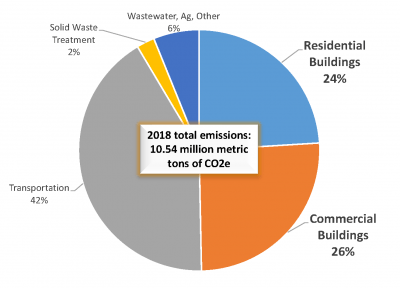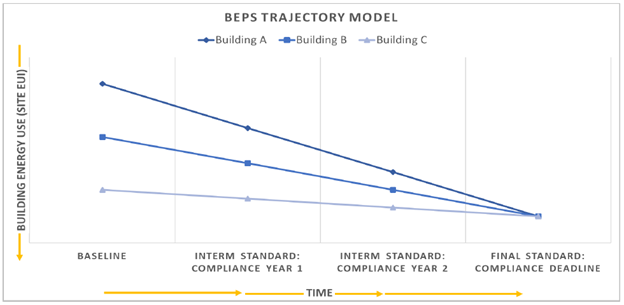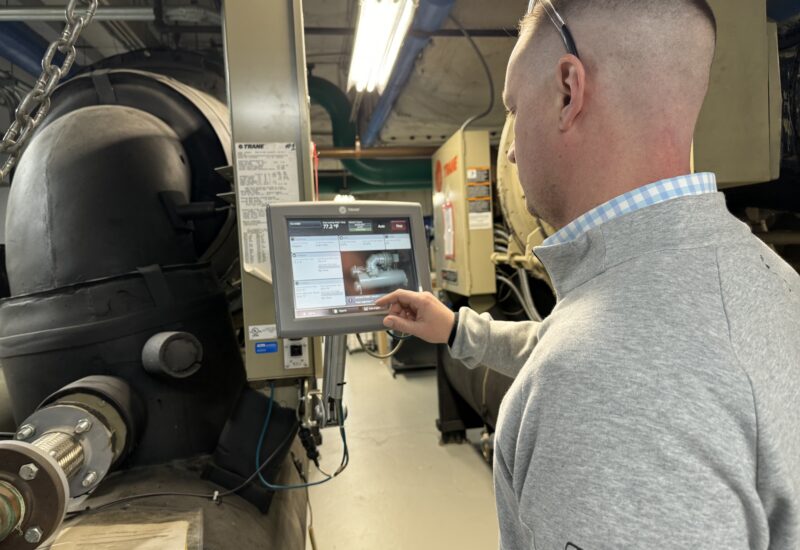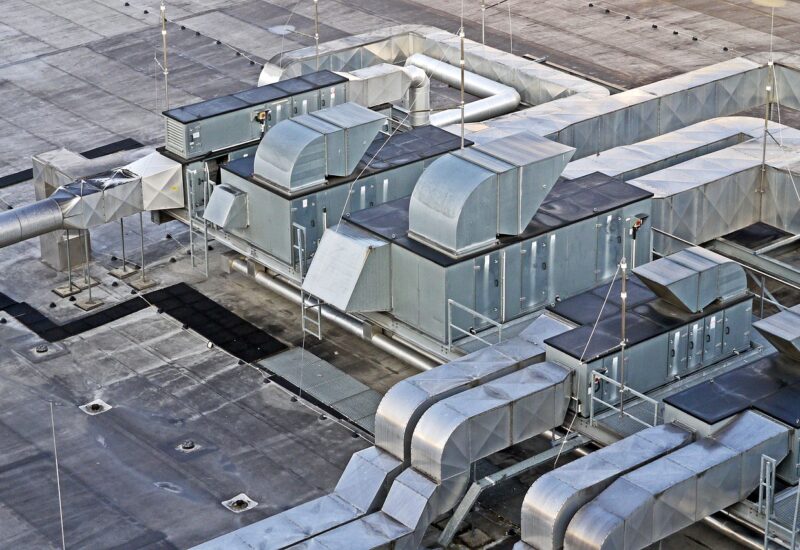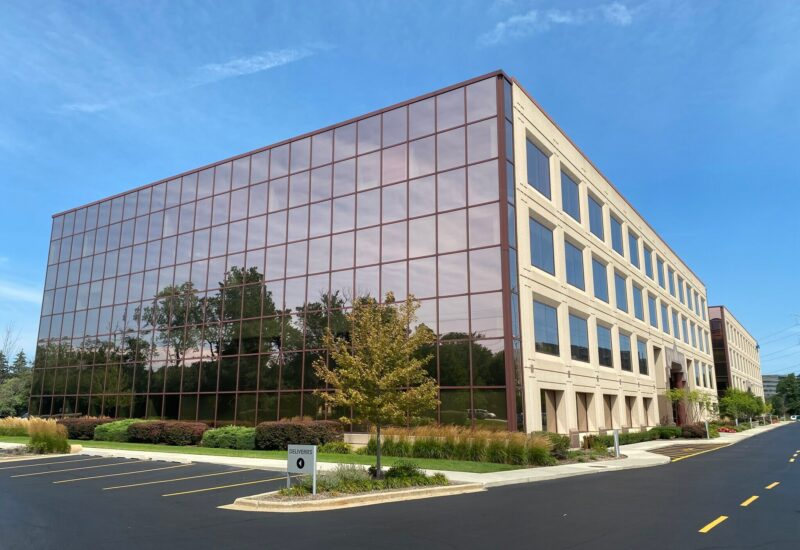On May 4, 2021, Montgomery County introduced the Building Energy Performance Standard (BEPS) legislation (Bill-16-21), with its’ first public hearing set for July 20, 2021. The proposed legislation is driven by the County’s goal to reduce 80% of greenhouse gas emissions by 2027 and 100% by 2035. If adopted, the bill will require existing buildings to achieve minimum threshold targets based on a building’s demonstrated energy performance, as shown in their benchmarking data. This would make Montgomery County the first county to set energy performance standards for existing buildings.
Since 2014, building owners have been required to benchmark the energy use of their non-residential buildings larger than 50,000 square feet in ENERGY STAR Portfolio Manager for public disclosure, through the Energy Benchmarking Law. The proposed legislation will expand benchmarking energy use to non-residential buildings greater than 25,000 square feet, add multifamily residential buildings, and include some previously exempted building types. These modifications will eventually cover roughly 220 million square feet or 85% of the commercial and multifamily floor area in the County.
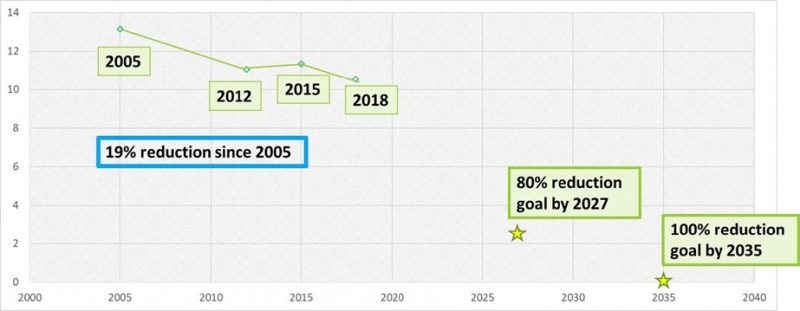
Background and Overview
The key guiding principle for Montgomery County’s BEPS legislation is to balance flexibility and immediate action. Every four years, properties are evaluated as to whether they are meeting interim targets. After three cycles, the final compliance is evaluated.
By modifying the current Benchmarking Law, the County includes performance requirements based on energy use intensity (EUI), additional building types, and minor clarifications. The energy data is reported annually via ENERGY STAR Portfolio Manager, as required by the Benchmarking Law. The average energy use of the past three years is then utilized to create the baseline for each covered building. On-site solar is fully credited against the site energy use as “net normalized site EUI,” which incentivizes the installation of solar power. In addition, the law allows BEPS to apply in the City of Rockville and Gaithersburg without legislative opt-in.
Who is Affected?
The BEPS legislation created the following groups of buildings. As a first step, buildings in Groups 1 and 2 must comply, followed by Groups 3 and 4 and eventually Group 5.
- County-owned Buildings and Groups 1 & 2: County and privately owned non-residential buildings that are 50,000 gross square feet and larger (currently covered by Benchmarking Law)
- Group 3: County and privately owned non-residential buildings that are 25,000 to 50,000 gross square feet, and buildings types previously exempted by the Benchmarking Law (e.g., warehouse, self-storage, etc.)
- Group 4: Larger residential buildings that are 250,000 gross square feet and greater
- Group 5: Smaller residential buildings that are 25,000 to 250,000 gross square feet
When do the Standards go Into Effect?
Based on the proposed legislation, the baseline for each building in Groups 1 and 2 would be created in 2022 based on the average of the previous three years (2019 to 2021). The interim standards to be met would be evaluated in 2027 and 2031, respectively. The third and final compliance would be evaluated in 2035 based on the performance in 2034.
All buildings within Groups 3 and 4 (commercial buildings 25,000 to 50,000 square feet and multifamily buildings over 250,0000 square feet) must begin benchmarking and report data of the calendar year 2021 by 2022. Multi-family buildings with a gross floor area between 25,000 and 250,000 square feet from Group 5 must begin benchmarking in 2022 and submit in 2023.
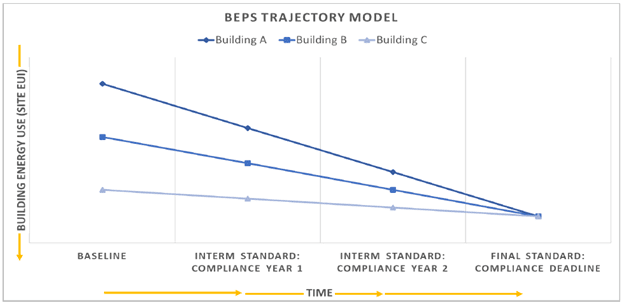
What if a Building is Not in Compliance?
Every four years, the buildings will be evaluated to determine whether they are meeting the set targets. The metric buildings are measured against is a normalized site Energy Use Intensity (EUI), which measures how effectively the building is using energy compared to its size.
If a building cannot meet the performance standards in interim cycles 1 and 2, the County may accept a Building Performance Improvement Plan (BPIP). The BPIP must include:
- Documentation of economic infeasibility or other circumstances beyond the owner’s control
- List of potential improvement measures, including calculations of energy savings and cost-benefit analysis of each improvement measure
- Timeline for achieving the energy improvements
- Procedures for correcting any non-compliance or deviation from the plan
To be considered in compliance the owner will need to meet the actions outlined in the approved BPIP. If a property owner does not meet the BEPS target or has not a DEP-approved BPIP, then the building will be non-compliant and subject to a Poor Performance Payment (PPP). Currently, any violation of the bill is a Class A violation. However, the goal is to have a PPP at a level high enough that a building would prefer to comply with BEPS or submit a BPIP. This would require a change to state law as fines are greater than $1,000.

Are There Any Exemptions?
The County may grant exemptions if a building is scheduled to be demolished, in financial distress, exempt from real property taxes and the owner’s net revenue is negative for two years, or if compliance with BEPS would be economically infeasible due to circumstances beyond the control of the building owner. Other assistance tools are currently being discussed for under-resourced sectors.
What is Next?
DEP will continue to provide updates on the status of the BEPS Legislation, outreach to stakeholders, develop training materials, and data analyses for standard-setting to inform regulations, and create an Advisory Board and a technical assistance hub for building owners. Regulations will be drafted and issued no later than June 1, 2022. Baumann is staying engaged while the County’s BEPS regulations are being drafted and will continue to share updates as new information is released.
